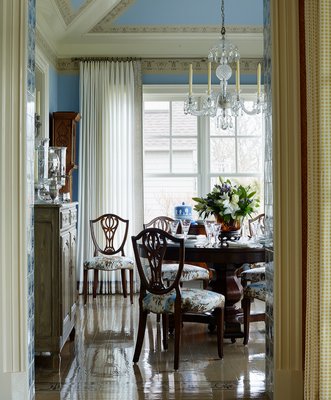
Don’t we all wish we had an Auntie Mame, who was endlessly adventurous, eternally buoyant, and always unflappable! And what about her decorating budget? Every time her bewildered nephew, Patrick, paid a visit to number 3 Beekman Place, Auntie Mame had gut renovated, reinvented, and redecorated her entire apartment—completely unrecognizable from her previous abode!It was not just Mame’s stylistic whims that fascinated me as a child watching the film, but the unfathomably deep financial pockets that she must have sported beneath those dazzling gowns. How did she manage to treat design, construction, furnishing and decoration, the same way most of us treat purchasing our seasonal pair of socks?
Well, that’s the fantasy and magic of film. Not that we can’t all let our imagination and fantasy run as free as Mame’s, but our bank accounts may not reflect the same largess. In fact, few do. And all this aside, the disposal income from Mame’s reconstructions, renovations, and redecorations would tax the landfills and drive eco-environmentalists crazy.
Design and decoration can be expensive. Since most of us do not have Mame’s stock portfolio, it behooves us to take stock of what we own and what we have inherited. The furnishings we own may look tired and worn out simply because we have been looking at them in the same spot, flanked by the same lamps, with the same painting for a long time. Rearranging the furnishings can bring a new life to your rooms, especially as summer draws to a close and everything seems worn to tatters by incessant houseguests, exuberant children and well-intentioned party animals.
For instance, place the sofa at the end of your bed, focus the seating arrangement around the fireplace rather than the view, move the breakfast table into the living room, and try your coffee and eggs in that room instead. Taking a fresh look at your artwork, mirrors and photography, you might consider grouping it all together in a collage-like, gallery-style assemblage. Try doing this as opposed to distributing these items throughout your walls: hanging only one picture on one wall because that wall looks blank. In fact, dare to leave a wall blank. Visual rest is not always a bad thing.
At one of my book tour talks here on the East End, I was asked a question that riveted the more seasoned members of the audience. A fashionably turned out, patrician listener sadly recounted, “I have 18th and 19th century antiques, of great value that are both beautiful practical and functional. I inherited many of them and they mean so much to me and my husband and I want to hand them down to my children but they don’t want them. And brown wood English furniture seems to have little to no value!” (You cannot imagine the vocal commiseration that welled up in the audience, striking a common chord.)
I responded to this question on several levels. First, consider the simple economics. Once these handmade, patinated antiques drop low enough in price, and the mid-century mass produced furnishings hit stratospheric prices (which they are quickly approaching), designers and consumers will rediscover the value and beauty of 18th and 19th century antiques.
Second, the somewhat static arrangement of antiques must be shook up a bit. A large-scale modern photo can look amazing over a Hepplewhite sideboard, and a molten glass lamp can be sensational atop a Sheraton console. In particular, English antiques are very architectural, and set up a dynamic interplay with clean-lined modern architecture. The dark woods juxtapose very successfully with the current trend of textural fabrics. The curvaceous French antique furnishings sit well in spare environments where their sculptural lines can be savored, but, as French furniture clusters and overlaps, it can feel cluttered and overwrought to the contemporary eye.
What we take away from Auntie Mame, is that change is refreshing. Reinventing is fun.
Looking at what we have and what we have inherited in a different light, in a different arrangement, in a different context can make a world of difference. The key to reinvigorating the space, is juxtaposing different styles and different periods, while always cognizant of the harmonious relationship of their silhouettes, shapes, and their relative scale.
You may not have Mame’s budget, but by rearranging and appreciating what you have, exercising greater freedom by mixing it all up, you may, like Mame, startle and impress not only your nephew Patrick (and your children), but also yourself.